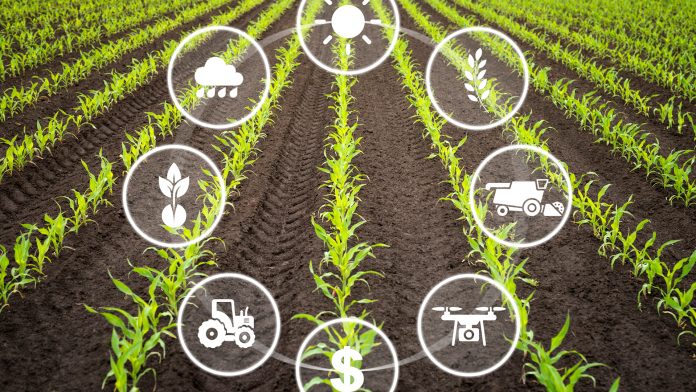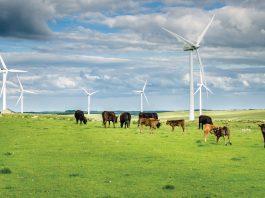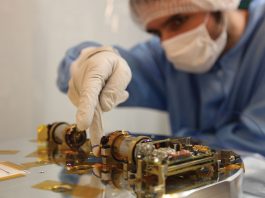The Lawrence Berkeley National Laboratory have announced the launch of three new projects that aim to develop new solutions for making smart farms carbon negative.
A new project series, by innovators at Lawrence Berkeley National Laboratory (LBNL), holds the potential to make agriculture more lucrative and sustainable. Funded by the US Department of Energy (DOE), the three new projects use Artificial Intelligence (AI), sensors, and ecological biology to influence the adoption of a carbon negative approach in agricultural industries.
The global benefits of farming crop based biofuel
The LBNL team aim to make the supply chain of biofuel feedstocks, such as corn, soy, and sorghum, carbon negative, meaning it removes more carbon than it emits.
According to a paper published by Cornell University researchers, Harry De Gorter and David R Just: ‘to fulfil the goals of reduced dependence on oil and an improved environment, US policy-makers deem biofuel policy crucial to complementing existing energy policies such as fuel taxes and cap and trade. Additionally, politicians advocate biofuels as a substitute for existing farm subsidy programmes.’
Two of the LBNL projects belong to the SMARTFARM programme of DOE’s Advanced Research Projects Agency-Energy (ARPA-E). Scientists hope that the increased productivity will have the effect of lowering costs and increasing farmers’ income.
“How can we make this Earth work for 7 billion people? If we can develop a pathway for farmers to have a better bottom line and help the environment, that’s where everybody wins,” said Michael Schuppenhauer, project lead and industry partner of Arva Intelligence, a startup based in Park City, Utah.
Sensor based data gathering
The first project, led by Blake Simmons of LBNL’s Biological & Systems Engineering (BSE) Division, will monitor five commercial farms in California and Arkansas growing corn and crops for straw.
Working with the project lead, Arva Intelligence, researchers will install sensors on the farms. The sensors will be tasked with monitoring the farm’s levels of fertiliser and water, as well as energy use and crop yield. Researchers will also install monitoring towers to measure emissions of carbon dioxide, nitrous oxide, and methane at subsecond resolution.
LBNL team plans to utilise the anaerobic digestion of crop residues, which occurs when non-harvested plant material begin to degrade, as a viable producer of biofuels. “Crop residues are actually the largest pool of readily available sustainable biomass that you can efficiently convert into biofuels and bioproducts,” Simmons said.
To determine the ratio of carbon input and output, LBNL scientists will conduct atmospheric sensing of greenhouse gases, genomic analyses to characterise the soil microbiome, and life cycle analysis. These field experiments will generate massive amounts of data which will be used by Arva Intelligence to build mathematical models and improve precision agriculture algorithms to help farms become carbon-negative.
Promoting agricultural carbon accounting
In the second project, LBNL researchers will analyse the data from the first study to develop a common standard for carbon accounting.
Established low-carbon fuel markets can bear sizeable financial rewards to products that are produced with low greenhouse gas emissions, bringing farmers as much as $100 per acre in additional revenue. “If you really want to put a price on carbon from biofuels production, you have to be able to accurately measure emissions of carbon and carbon-equivalents from each farm.
“That could incentivise farmers to move away from resource-intensive farming, where they are driven to maximise yield by using more fertiliser,” said Yuxin Wu, head of Berkeley Lab’s Geophysics Department.
Wu suggests that carbon accounting can present complications for farmers. “Greenhouse gases are released by plant and root respiration, by the soil, by fertiliser use, and when you pump water or use machinery. It’s a complex equation, and each farm operates in their own way. How we put together these very different datasets is a challenge,” commented Wu.
Integrated machine-learning
The objective of the final project, led by Nicola Falco and Haruko Wainwright, is to develop machine-learning software to integrate DOE’s environmental databases with local-scale monitoring and sensing.
Researchers will create a scalable software system to combine the local-scale datasets, such as from sensors monitoring water, nutrients, and fertilisers, with the DOE datasets. “The DOE’s databases and user facilities offer powerful assessments, yet they have been rarely used for ecosystem management,” said Falco.
In 2018, LBNL began their research using machine learning to promote sustainability in agriculture on a farm in Arkansas. The team has since established a series of algorithms to help farmers estimate sprout and plant density using images taken by drones. These estimates will enable real-time adjustments, boosting productivity.
“Berkeley Lab has extensive expertise characterising soil-plant interactions and other terrestrial ecosystem properties across scales,” said Wainwright. “By working with Arva and its machine-learning capabilities, we hope to transfer our tools and knowledge more quickly for operational management.”









